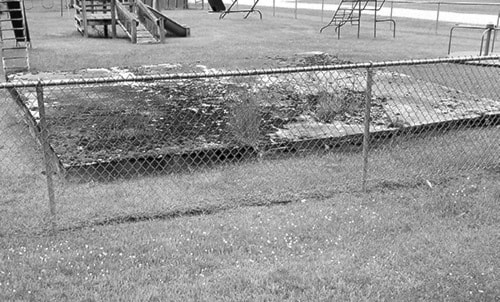By Eleanor Deckert
What is worth preserving? Who is responsible?
The North Thompson Valley has such a young and fragile history.
Who will protect it? How soon will a permanent, formal museum be founded?
So much data is available now which is fading every year.
Fire destroyed the Blue River Hotel and train station... but Janie’s Store remains.
The old steel Bailey bridge spanning the Clearwater River was disassembled ... but the old wooden Mad River bridge remains.
The McMurphy and Candle Creek log school houses were relocated ... but the Avola log school house remains.
Industrial sites such as the roundhouse in Blue River, the sawmill in Avola, the ferry crossing in Vavenby, and all of the section houses along the railway have been taken down... but cement foundations remain.
Log cabins, barns, stores, post offices stand empty and abandoned until they crumble and decay ... a few champions remain.
The Anglican Church in Birch Island is now privately owned and the Evangelical Free Church in Blue River is now a B&B ... but Our Lady of the Snow Catholic Church in Blue River remains.
Grave sites on private land may have permanent or wooden markings ... some are lost in time ... some names and dates remain.
Photographs, stories, newspaper clippings, maps, letters, artifacts, collections, family possessions ... all of these and also larger fixtures are physical reminders of the families, activities, technology, economy, hopes and limitations of the people who lived in the past where we stand today.
Human error can be destructive, too. Will a new owner allow a previous owner time to remove personal items? Will a death bring such stress within the extended family that items are discarded?
In a small attempt to bring awareness of historic topics, I have written approximately 40 Valley Voices columns. Recording interviews with men and women over 80 years old, sifting through the Kamloops archives, making notes from the “North River” and “North Thompson Reflections” as well as leafing through local information in the Clearwater Library have yielded fascinating details. There is so much more.
I need to step away from this column for awhile, but have high hopes that other writers will contact the Times or Star Journal and give this project a try.
It’s good practice; perhaps you will gain enough confidence to write a book!
I leave the reader with one more story.
Decision-making on the best use
Residents in Avola spent some time last December trying to research, remember and understand this question, “Is a slab of cement an historic object?” And the owners of the playground where the cement slab was located were considering, “Shall it be removed or resurfaced?”
There was a time before hydro-electricity. In fact, up until around 1968 electric generators supplied many small towns in this area, including Avola.
Since the early 1950s the store had its own generator. The Emil Anderson Construction machine shop had its own setup of generators to keep equipment repaired while the highway was being built. Bunkhouses and a 21-site mobile home park also had power supplied this way.
Jim McCoy looked after several big generators that the sawmill kept running.
One centrally located generator supplied the company houses in Avola. Wiring ran along the outside of the wall.
Bob Dhillon remembers, as a child, the thumping of the three-cylinder engine making it hard to fall asleep. Lights were off early as the generator was shut off at 10 p.m. every night. The generator sat on a cement pad in the middle of town.
Dave Jensen was 19 years old when he had the job of re-fueling. He used a hand-pump to take fuel out of train cars and into a tank on the back of his pick up truck, and then pump it again into the generator’s fuel tank.
Lights saved lives.
Yet, this ordinary looking block of concrete has another meaning.
Kevin Deckert recalls an episode of ‘Front Page Challenge’ featuring an interview with a pilot and navigator who were flying through the mountains.
As darkness approached, they realized they needed to regain their bearings. The lights on the compass, altimeter and fuel gauge failed and the navigator reached around the pilot, flicking his lighter again and again to illuminate the instrument panel.
And then, they saw the lights of the town of Avola. Reoriented, they continued on, arriving safely at their destination.
The men summed it up: “We didn’t realize at the time that the generator in Avola was routinely turned off at 10 p.m. Our flight above the town was at about 9:30 p.m. Without that light, we would have been wandering and lost with a very different ending to our story.”
The cement pad was within the playground owned and managed by Area B’s Thompson Headwaters services committee.
Decisions were waiting to be made to improve the playground, with a delegation scheduled to speak at a Dec. 15, 2015, meeting in Avola. They requested that the cement pad be repaired, left in place and incorporated into the playground’s plan.
Bob Jensen, the only person who has lived nearby and in Avola for his whole life, said at the time, “It’s more than a nostalgic ‘I remember.’ It’s a reminder that until recently everyone did things ‘the old way.’ And it is significant that this generator played a part in a dramatic aviation story of B.C.”
Did Avola’s concrete pad become heritage site to be preserved?
Unfortunately, no. The decision at the Dec. 15, 2015, meeting was to remove the pad and instal a picnic shelter on a gravel base.
A sign will be installed at the site that will tell the history and the significance of the cement pad and the purpose it played in bringing light to Avola, and also saving the lives of those in the air.
(Updates to article provided by Star/Journal editor Jill Hayward as per Eleanor Deckert telephone interview).
